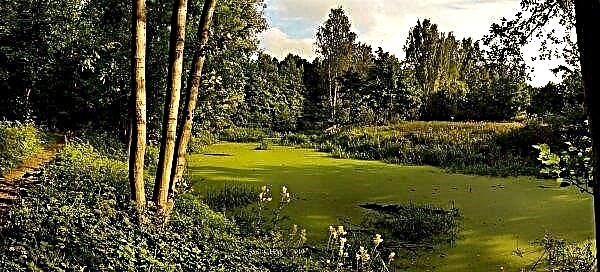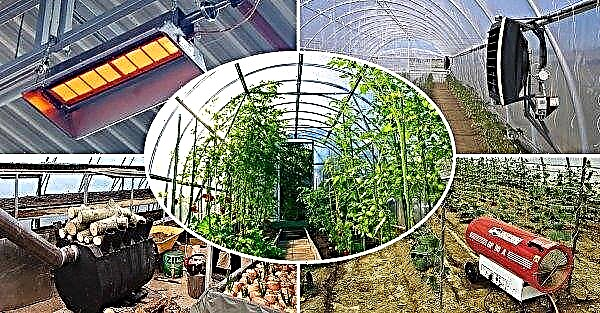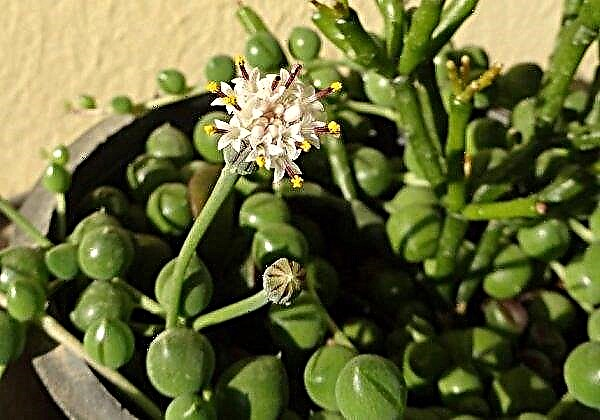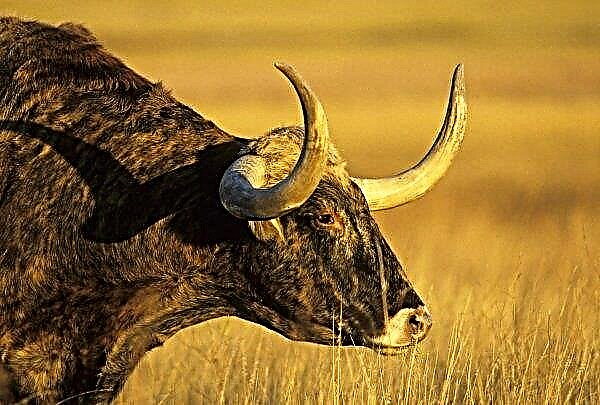In nature, more than fifty varieties of fir are charged, ten of which are actively used in landscape design. Planting and caring for the plant in question in the Pine family is carried out according to general rules that are suitable for almost every variety of this coniferous tree. Fir is used not only as a decorative element in a certain area, but also it is known for its healing properties, it is in demand in cosmetology and carpentry.
Origin of name
The name of the plant in question has an ambiguous history of origin.
The etymology of the word "fir" can be considered according to such options:
- the Latin name of this conifer is “Abies”, which originates from the Indo-German word “abh” (“abound”), which confirms the fact that the fir is densely covered with needles.
- The Russian version of the name comes from the Karelian word “pihka”, meaning “resin”.
- Fasmer’s research speaks of the German origin of the word “Fichte” translates as spruce or pine; Such a version of borrowing was supported by A. Matsenauer and A. Preobrazhensky.
- this name can also come from Western Finnish languages (“pihk” - large forest, “pihku” - pine); such an assumption arose on the basis of the research of V. A. Merkurov.
- Arkhangelsk dialects interpret the word "fir" as "small spruce thicket"
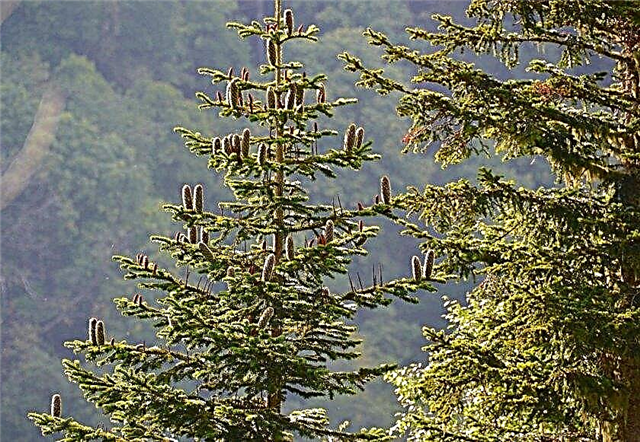
Botanical description of fir
The considered variety of gymnosperms of the Pine family is distinguished by a large number of varieties and forms, each of which has its own special features in appearance. Each of the representatives of this genus of trees can differ in height, color of needles, the shape of cones and other signs.
Common features for all varieties of fir can be combined under such a botanical description:
- Trunk and crown. A plant can grow as a tree or as a bush. The crown of the culture looks like a narrowed pyramid or cone, which can be partially transparent or thickened, narrowed or spreading. Trunks and branches are brown in color, and with age, small and large deep cracks are visible on the bark. The branches are arranged in a circle around the trunk.
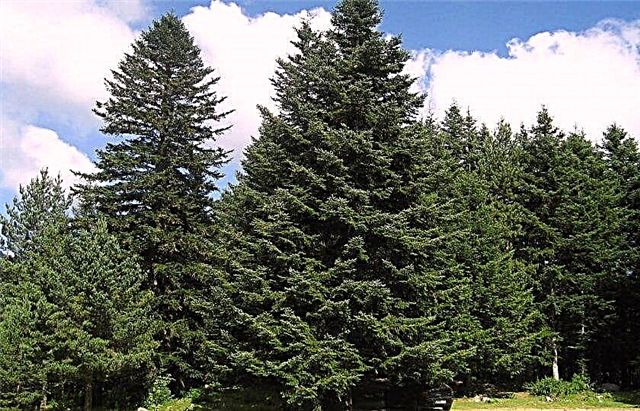
- Root system. This part of the plant is distinguished by a powerful rod root, which deepens to an average of 200 cm.
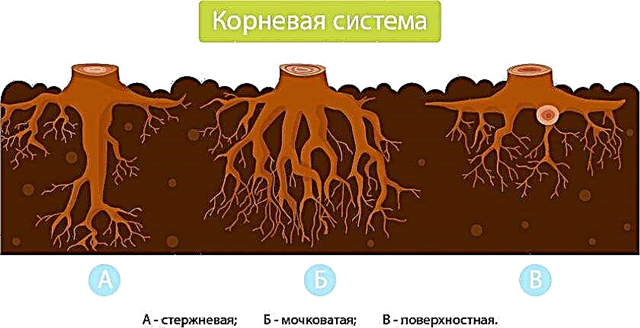
- Needles. Young shoots have a dense coniferous cover. The needles are narrowed at the base. They are distinguished by a flat shape and relatively rigid structure. The growth of needles occurs in the form of a comb in two parallels. The length of the needles on average is 4–8 cm and 0.15–0.2 cm in diameter. The tree is covered with glossy dark green needles, and from below the needle is dimmer with paired white stripes.
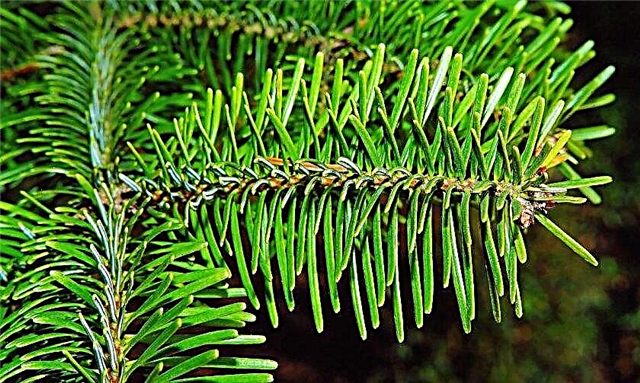
- Flowering, cones and seeds. The plant begins to bloom after 60 years, and the process occurs in late spring (May). Bisexual cones grow on a tree. Male specimens are distinguished by a reddish or dark yellow color due to overflow with pollen, and their shape is elongated, resembling an icicle. Female cones are presented in the form of a cylinder or ellipse, growing upward on straight rods. Young cones have a lilac-colored scale, which eventually repaints brown. Their size in adulthood is 4–11 cm by 2–4 cm. In the autumn, seeds ripen under cover scales. Three-pointed seeds have a yellowish or brown color and a diameter of 5–7 cm. Usually, by the end of September - early November, the cones fully ripen, their scales become woody and decay, as a result of which the seeds are sown.

Plant characteristics
Like every plant, fir has a number of special characteristics that may vary to some extent depending on the variety of the plant.
The main parameters of fir can be divided into the following categories:
- height;
- growth rate;
- endurance;
- exactingness.
Speaking about the size of this plant, it should be understood that the culture can be of two types:
- medium-sized (150-200 years);
- tall (300 years or more).
The average height of the tree in question is 0.5–90 m, depending on external factors.
Did you know? Fir seeds are lightweight — 1000 copies will have a weight of not more than 6-7 g.
Fir usually grows up to 150-300 years, but there are times when the plant has lived for more than 6 centuries. The genus Sosnovy under consideration is characterized by slow growth, a young tree grows by 11–15 cm per year. The growth rate increases by 7–10 years of plant life.
Fir is considered a shade-tolerant crop, so it is good to plant it both in partial shade and in dark areas.. Most of the varieties of this coniferous plant are characterized by high winter hardiness and can withstand temperatures from –15 to –25 ° С. Young trees are not frost-resistant enough, therefore, before wintering, they must be covered with a special garden cloth or spruce branches. An adult plant is significantly resistant to frost.
 Fir is considered a “foggy tree” because it loves moisture, but wetlands or waterlogging affect the root system, which can lead to death of the plant
Fir is considered a “foggy tree” because it loves moisture, but wetlands or waterlogging affect the root system, which can lead to death of the plant
Although this genus of Sosnovy is considered heat-loving, but it does not tolerate heat with drought, there are often cases of coniferous burns from prolonged exposure to the sun. Planting a tree is recommended in areas with protection from the winds.
Where it grows in nature
The habitat of fir depends on its variety. AT to a greater extent, this plant can be found in the Urals, the Far East, as well as Siberia. Some species are actively grown in North America, Mexico, El Salvador, Canada. Also considered the genus Sosnovyh can be found in Alaska.
In nature, you can not meet fir growing in central Russia.
Important!A significant number of varieties of fir is environmentally demanding — cities, as well as polluted places are not a favorable territory for planting.
Here are some popular species with their habitat:
- Siberian - from the north-eastern part of the European part of the Russian Federation to the Lena River;
- balsamic, phrase, plain - North American trees;
- white - grows in the Far East;
- vicha - Japanese fir;
- Kamchatka, Sakhalin and whole-leafed - live in the territory of the Primorsky Territory.
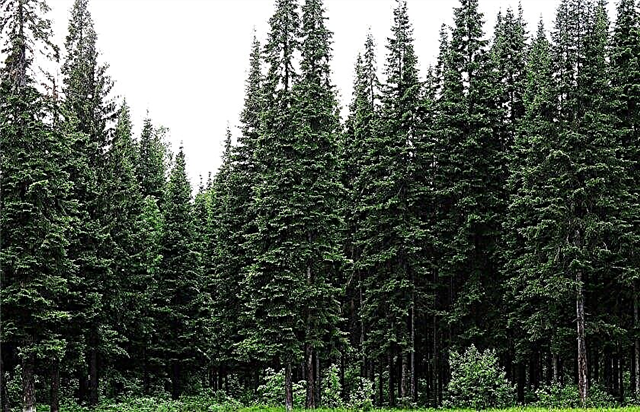
Common species
Despite the huge number of varieties and species of this genus of conifers, landscape designers give preference only to some varieties of fir.
Due to their good characteristics and a high degree of decorativeness, such instances gained great popularity:
- Balsamic. This species grows in the coniferous forests of North America. On average, a tree reaches 20–25 m in height and has a narrowed pyramidal shape. The bark has a black-brown color. The needles have a pleasant smell and stand out in dark green, have a glossy finish on top, and light paired strips on needles on the bottom. A tree grows quite quickly compared to its relatives. The plant gives fruit from 20-25 years of life. A plus of this type is its frost resistance and shade tolerance. Balsam fir is used both in single and group plantings in gardens, malls and parks. This species is not planted in the southern regions with a dry climate.

- White or scaly. This Asian species of fir can be found in the Far East, North China and Korea. The plant can reach 30 meters in height. A slender, upright tree has a pyramidal shape. Scale fir has a light gray bark, which darkens with age and becomes covered with cracks. Young shoots are yellow-gray in color. Dark green needles bifurcated at the ends, have a glossy finish on top, and light stripes on the bottom. The length of the needles is about 3-4 cm. Among the main characteristics of the tree can be considered its winter hardiness, rapid growth, short durability (up to 150-170 years). The species in question is finicky to air and soil humidity, and is also often exposed to rot until the age of 20. The tree is often planted in urban areas, as this species satisfactorily tolerates such conditions. Landscape designers use white fir in various compositions, and for group or single planting in forest parks.

- One color. North American tree lives on average about three centuries. A special feature of this species is its resistance to various climatic changes. It tolerates wind, drought and cold, prefers a well-lit area. The tree grows relatively quickly and reaches up to 40 m in height. Not picky about the soil. Light brown bark has a layered structure. A distinctive feature is the needles, which has a light blue color. The plant has many decorative forms (Violation, Aurea, Compact Glauka), which have different sizes and shade of needles.
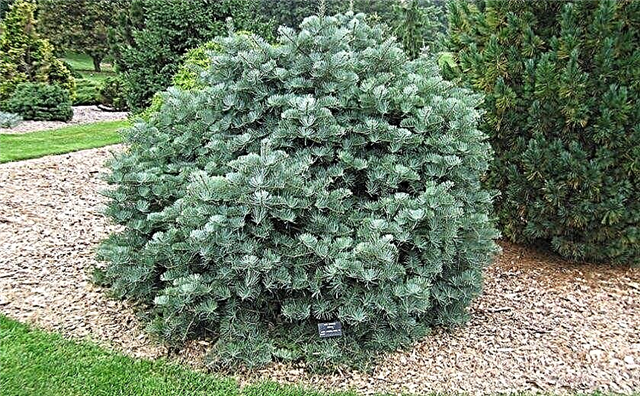
- Siberian. The species in question is found in nature in the north-eastern (European) part of Russia and Siberia. The plant loves moisture, it feels good both in the sun and in the shade. The average service life is 150-200 years. The plant can be considered an excellent filter, as it cleans the air well. Therefore, it is recommended to plant this fir near residential buildings. The tree is covered with smooth brown bark. Dark green needles have a beautiful shine, the length of the needle is 2-3 cm. The cones have a different color - brightened purple or brown. Decorative forms of this species can have different needles: silver, blue.
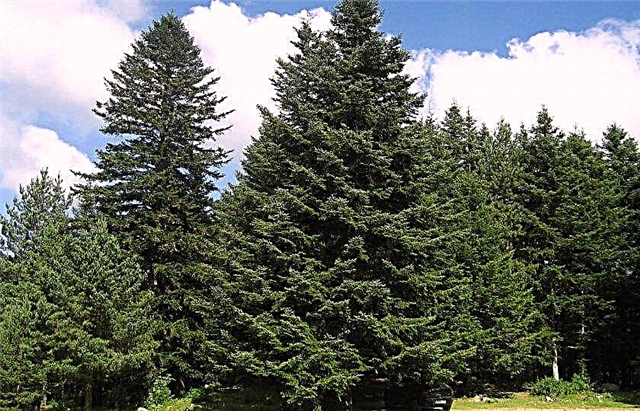
Use in landscape design
Fir is considered one of the most popular conifers used in landscaping., and this plant was cultivated several centuries ago. The glossy coating on the dark green needles, as well as the light stripes on the needles below increase the decorative qualities of the plant.
More varieties are unacceptable to plant in urban areas due to gas contamination and dustiness of the atmosphere.
Did you know? The wood of the conifer in question has been very popular in the woodworking industry for many years. For example, the total amount of harvesting of white fir according to the statistics of 1976 in the USA amounted to 14.2 million m³.
Fir plantings in compositions with Manchurian walnut, birch, maple, and also other medium and high-growing crops, such as pine or larch, are considered very beautiful. Basically, designers prefer alley or group planting of the tree in question. The option of planting fir as a hedge is also considered acceptable.

Fir Diseases and Pests
The plant in question is also exposed to various misfortunes.
Important!In addition to the misfortunes listed below, fir is greatly damaged by sudden changes in temperature and prolonged droughts, as a result of which the culture begins to hurt, and burns from the bright sun sometimes lead to its death.
Among the constant pests and diseases there are:
- Fir moth mercilessly damage the needles of a tree in the form of a caterpillar or butterfly. This pest usually threatens fir growing in Europe. It is recommended that anti-caterpillar agents fight the moth, for example, Pepidocide, which must be sprayed with 3 liters of the agent per 1 ha of land.
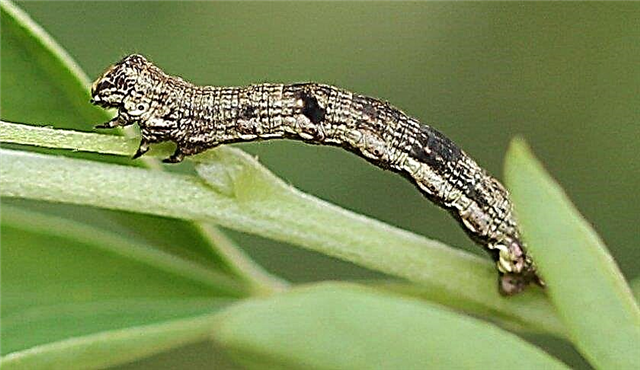
- Siberian silkworm - an insect that destroys the needles of many trees from the genus Pine. Caterpillars of this pest give preference to Siberian and blond fir. This type of butterfly covers large areas, as a result of their impact, the needles and bark are destroyed, which leads to the drying of the tree. As in the case of the fir moth, any biological products from caterpillars are suitable for fighting.
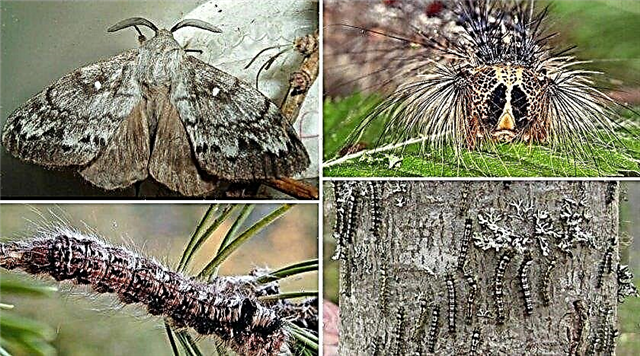
- Silkworm nun - This is a butterfly from the family of the flies, the caterpillars of which prefer to destroy spring shoots with buds, and then they already eat up the needles. A massive invasion of pests leads to drying out of the trees. An excellent tool to combat this silkworm can be considered a biological product "Lepidocide".
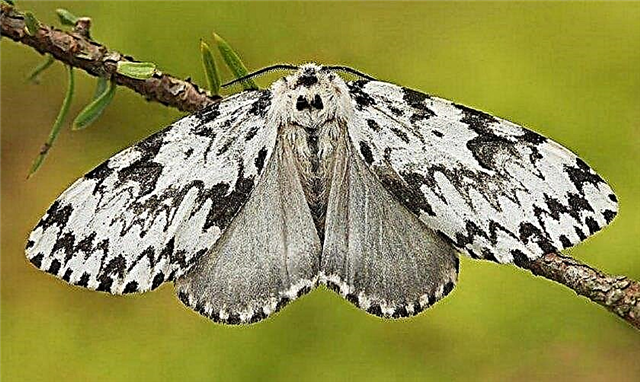
- Spruce fir hermes - This is a kind of aphid that contributes to the curvature and yellowing of fir needles. After wintering, larvae, nymphs, as well as mature individuals embrace the tree, sucking the needles' juice and eating the fir bark. To deal with this pest is necessary in several stages: to destroy the larvae and spray the entire plant with insecticides in the spring.

Thus, fir is a unique tree, characterized by good characteristics, minimum requirements for planting and various variations of group and composition planting, which is a huge plus in landscape design.













